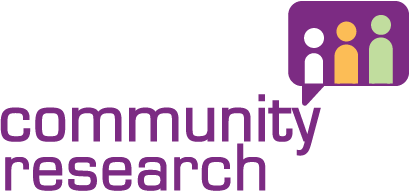Top tips for running a research panel
We are increasingly being asked to recruit and run qualitative panels for clients as a cost effective and flexible means of bringing a citizen’s perspective into policy and strategy decisions. A panel gives a client ready access to an increasingly informed group of members of the public. We are currently running a panel for Phoenix Insights looking specifically at pensions decision making and another panel for the GMC which brings together patients and health professionals. More detail on the latter can be found here.
Below we answer some key questions that we are often asked by clients:
How long should a panel last?
We generally recommend running a panel for 12-18 months before a panel refresh becomes necessary (and we replace the original panel with new members). This is because we know that conditioning will occur, meaning that those who have been on the panel for over 18 months will cease to be as representative of the ordinary customer or member of the public.
Should I have a plan for the panel?
A simple and obvious first step is to plan panel activities in advance. This means that we can give panel members as much notice as we can as to when their input will be required. This is particularly important if we anticipate the engagement activities are likely to be face to face.
Even if a finalised plan is not possible at the start, it is worth considering the potential number of engagements at the outset to ensure prospective panellists can be made aware of the level of commitment required.
How many panellists should I have?
As with all research, there is a trade-off to be made between scale and cost. Typically, we have run panels of between 20 and 50 people and our recommendation for the optimal size of a panel depends on the type of engagement anticipated by the client (online or face to face) and the potential subject matter that will be discussed in sessions, in addition to any budget constraints. It is worth noting that the Customer Advisory Board approach (mainly developed with customers in the US technology sector) can comprise as few as 12-20 members.
Online or face to face?
It is worth considering at an early stage whether it is important to have representation from across the UK. Some of our clients are UK regulators who require representation from across England and the devolved nations and this has been a key consideration in shaping the make-up and design of their panel. We need to weigh up the benefits of clustering participants in specific locations (so as to facilitate easy recruitment to face to face sessions) as opposed to recruiting more widely and conducting more online engagement.
What activities could the panel do?
There are a range of different types of research activities that could be convened, including online and in-person engagement. Our suggested approach would aim to answer our client’s questions while ensuring panellists feel engaged and committed.
A panel can also be a vehicle for senior management and other stakeholders to have regular meaningful and direct engagement with the people they serve. One benefit of using a panel in this way is that panellists are more informed about the issues than general research participants and so could have a more in-depth discussion about the issues with senior individuals.
How do we build and maintain engagement?
Unlike conventional research activities, an advisory panel is about establishing a two-way relationship, where panel members are treated more as partners and less as participants. While offering panellists a monetary incentive for their time is still key, we would always suggest that that panellists are made to feel special. We encourage clients to be visible to panellists to reinforce this sense of partnership. This means sharing updates about what they have done with panel feedback; involving themselves in presenting information during engagement sessions; or simply observing sessions and meeting panellists.
Get in touch to discuss your panel!
Each panel is bespoke to our client’s requirements. If you’d like a conversation about how we can help you to create a panel of engaged and informed people to bring citizens’ voices into the heart of your policy thinking and decision-making, please get in touch.

